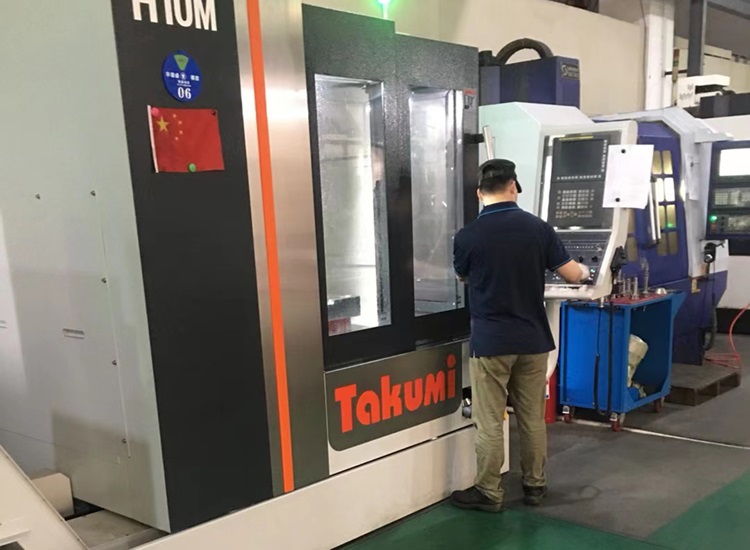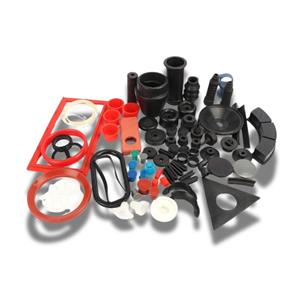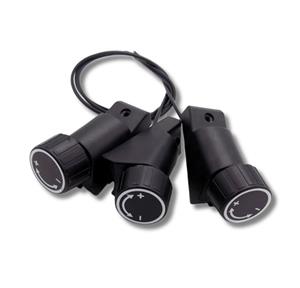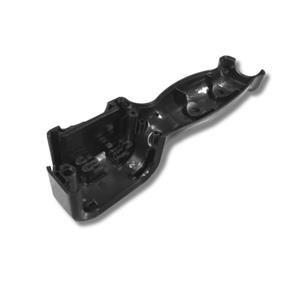18 Basic knowledge you must know about injection molds
As an injection mold craftsman, do you know all these 18 things?
01shooting
The melt usually flows from the nozzle into the injection port, but in some molds, the nozzle is part of the mold because it extends to the bottom of the mold. Elsewhere there are two main types of nozzles: open nozzles and closed nozzles. In injection molding production, open nozzles should be used more often because they are cheaper and have less potential for retention.
If the injection molding machine is equipped with a pressure relief device, this nozzle can be used even with low-viscosity melts. Sometimes it is necessary to use a closed nozzle, which acts as a stop valve to block the plastic in the injection cylinder. Make sure that the nozzle is correctly inserted into the nozzle sleeve. The top hole is slightly smaller than the nozzle sleeve, which makes it easier to withdraw the nozzle from the mold. The hole of the nozzle sleeve is 1mm larger than that of the shooting nozzle, that is, the radius of the nozzle is 0.5mm smaller than the radius of the nozzle sleeve.
02Filter and combined nozzle
Plastic impurities can be removed by the filter of the extendable nozzle, that is, the melt and plastic flow through a channel, which is divided into narrow spaces by inserts. These narrow spaces and gaps remove impurities and improve the mixing of the plastic. Therefore, by extension, a fixed mixer can be used to achieve better mixing results. These devices can be installed between the injection cylinder and the nozzle to separate and remix the melt, mostly by causing the melt to flow through stainless steel channels.
03Exhaust
Some plastics need to be vented in the injection cylinder to allow the gas to escape during injection molding. In most cases this gas is just air, but it may be moisture released by melting or a single molecule gas. If these gases cannot be released, the gas will be compressed by the melt and brought into the mold, where it will expand and form bubbles in the product. To drain the gas before it reaches the nozzle or mold, lowering or reducing the screw root diameter can depressurize the melt in the injection cylinder.
Here, the gas can be discharged from the holes or holes in the injection cylinder. Then the diameter of the screw root is increased, and the devolatilized melt is directed toward the nozzle. Injection molding machines equipped with this facility are called vented injection molding machines. There should be a good smoke exhauster with a catalytic burner above this exhaust-type injection molding machine to remove potentially harmful gases.
04The role of increasing back pressure
To get a high-quality melt, the plastic needs to be heated or melted consistently and mixed thoroughly. Proper melting and mixing requires using the correct screw, and having enough pressure (or back pressure) in the shot cylinder to achieve consistent mixing and thermal consistency.
Increasing the resistance to oil return can create back pressure in the shooting cylinder. But the screw takes longer to reset, so there is more wear and consumption in the drive system of the injection molding machine. Maintain the back pressure as much as possible and isolate it from the air. The melt temperature and mixing degree must also be consistent.
05 stop valve
No matter what kind of screw is used, the tip is usually equipped with a stop valve. In order to prevent the plastic from flowing out of the nozzle, a pressure reducing (reversing cable) device or a special shooting nozzle is also installed. If you use an abortion stopper, you must check it regularly because it is an important part of the shooting tank. Currently, switch-type nozzles are not commonly used because the plastic inside the nozzle equipment is prone to leakage and decomposition. Each type of plastic now has a list of suitable shooting nozzle types.
06Screw retreat (reverse cable)
Many injection molding machines are equipped with screw retraction or suction devices. When the screw rotation stops, it is hydraulically withdrawn to suck back the plastic at the tip of the nozzle. This device allows the use of open nozzles. The amount of suction back may be reduced because incoming air can cause problems with some plastics.
07 screw packing
In most injection molding cycles, it is necessary to adjust the rotation amount of the screw so that after the screw is injected, there will mostly be a small amount of cushion plastic left. This can ensure that the screw reaches an effective advancement time and maintains a fixed shooting pressure. The padding for small injection molding machines is about 3mm; for large injection molding machines, it is 9mm. No matter what screw packing value is used, it must remain the same. Now the size of screw packing can be controlled within 0.11mm.
08Screw rotation speed
The rotation speed of the screw significantly affects the stability of the injection molding process and the amount of heat acting on the plastic. The faster the screw rotates, the higher the temperature will be. When the screw rotates at high speed, the friction (shear) energy transmitted to the plastic increases the plasticizing efficiency, but it also increases the unevenness of the melt temperature. Due to the importance of screw surface speed, the screw rotation speed of a large injection molding machine should be lower than that of a smaller injection molding machine. The reason is that the shear heat energy generated by a large screw is much higher than that of a small screw at the same rotation speed. Due to different plastics, the screw rotates at different speeds.
Factory renderings (2)

09Injection amount
Syringe molding machines are usually evaluated based on the amount of PS that can be injected in each injection molding, which may be measured in ounces or grams. Another ranking system is based on the volume of melt that the injection molding machine can inject.
10Plasticizing ability
The evaluation of an injection molding machine is usually based on the amount of PS material it can uniformly melt in 1 hour, or the amount of PS heated to a uniform melt temperature (in pounds and kilograms). This is called the plasticizing capacity.
11Estimation of plasticizing capacity
To determine whether the product quality can be maintained throughout the entire production process, a simple formula related to output and plasticizing capacity can be used, as follows: t=(Total injection shot volume gX3600)÷(Injection molding machine plasticizing capacity kg/hX1000) t is the minimum cycle time. If the cycle time of the mold is lower than the t value, the injection molding machine cannot fully plasticize the plastic to achieve uniform melt viscosity, so injection molded parts often have deviations. Especially when paying attention to the quality of injection molded products with thin walls or close tolerances, the injection amount and plasticizing amount must match each other.
12 Injection cylinder residence time
The rate of plastic decomposition depends on temperature and time. For example, plastics will decompose after a period of time at high temperatures, but will take longer to decompose at lower temperatures. Therefore, the residence time of plastic in the injection cylinder is very important.
The actual residence time can be determined experimentally by measuring the time it takes for the colored plastic to pass through the injection cylinder. It can be roughly calculated by the following formula: t=(Rated material quantity of the injection cylinder gX cycle time S)÷(Injection material (Quantity g
13 Calculate detention time and importance
As a general rule, the residence time of a certain plastic on a specific injection molding machine should be calculated. Especially when large injection molding machines use smaller injection quantities, the plastic is prone to decomposition, which is not detectable from observation. If the residence time is short, the plastic will not plasticize evenly; if the residence time is long, the plastic properties will decay.
Therefore, the residence time must be kept consistent. Method: Ensure that the input plastic to the injection molding machine has a stable composition, consistent size and shape. If there is any abnormality or loss in the parts of the injection molding machine, it must be reported to the maintenance department.
14. Injection cylinder temperature environment
It should be noted that melt temperature is important and any shooting cylinder temperature used is only a guideline. If you have no experience processing a particular plastic, start with the lowest settings. Usually the temperature in the first zone is set to the lowest value to prevent the plastic from melting and sticking prematurely in the feed port.
The temperature in other areas then gradually increases until it reaches the nozzle. To prevent dripping, the temperature at the tip of the nozzle is often slightly lower. The mold is also heated and cooled. Due to the size relationship of many molds, the molds are also divided, but unless otherwise specified, each area should be set to the same size.
15 Melt temperature
The nozzle can be measured or measured by air injection method. When using the latter for measurements, care must be taken to ensure that no accidents occur when cleaning hot-melt plastics, as the high temperatures of hot-melt plastics can burn or even corrode the skin. In injection molding factories, burns are accidental.
Therefore, gloves and a face mask should be worn when handling hot plastic or in areas where there is a risk of hot melt plastic splashing. To ensure safety, the tip of the heating needle should be preheated to the temperature to be measured. Each plastic has a specific melt temperature. To achieve this temperature, the actual injection cylinder adjustment depends on the rotation speed of Luocun, back pressure, injection volume and injection cycle.
16Mold temperature
Always check that the injection molding machine is set and operating at the temperatures specified on the record sheet. this is very important. Because temperature will affect the surface finish and yield of injection molded parts. All measured values must be recorded and the injection molding machine inspected at specified times.
17 Uniform cooling
The completed injection molded part must be cooled evenly, that is to say, different parts of the mold must be cooled at different rates, so that the entire product will be cooled evenly. Injection molded parts must be cooled as quickly as possible while ensuring that defects do not occur, such as uneven surfaces and changes in physical properties. The cooling rate of each part of the injection molded part must be equal, but it refers to using uneven methods to cool the mold. For example, cold water is introduced into the inner part of the mold, while warmer water is used to cool the outside of the mold. Syringe Plastic Tolerance This technique should be used especially for precision straight products or large products with long melt flow at the watering outlet.
18 Temperature and cooling checks
Always check that the injection molding machine is set and operating at the temperatures specified on the record sheet. this is very important. Because temperature will affect the surface finish and yield of injection molded parts. All measured values must be recorded and the injection molding machine inspected at specified times.
Jinjiekun Industrial has been specialized in providing one-stop services such as precision plastic two-color mold design, manufacturing, injection molding, spraying, screen printing, and assembly for 15 years. It is located in Xiamen, Fujian Province, close to the Taiwan Strait, with developed transportation, convenient air transportation, and fast logistics. To learn more about ODM/OEM processing and customization, please call the consultation hotline: +86-592-6285025, or click on the website’s online customer service for consultation. Jin Jiekun is happy to serve you.




